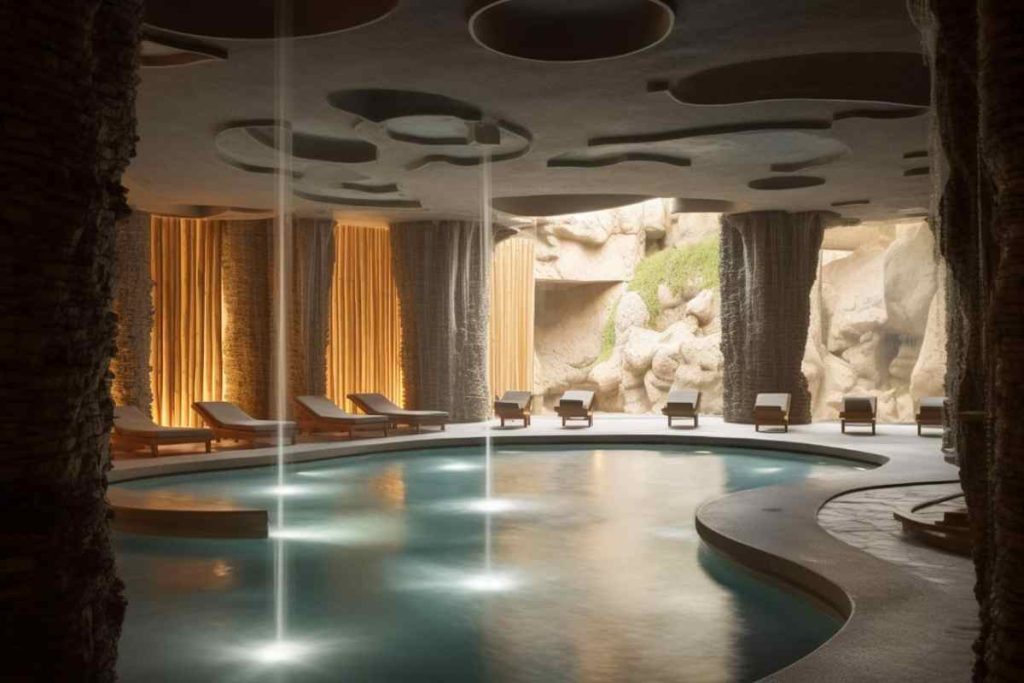The Ancient Roots of the Turkish Hammam
The Turkish Hammam is a bathing tradition that dates back to ancient Roman and Byzantine times. Over centuries, it was embraced and elevated by the Ottoman Empire, becoming an essential part of daily life and spiritual routine. More than just a place for cleansing, the Hammam became a site of socialization, ceremony, and health. Each session in a Hammam is a connection to a vast and meaningful cultural legacy, echoing traditions passed down for generations.
The Evolution from Roman Baths to Ottoman Hammams
The Turkish Hammam evolved directly from Roman bathhouses, where steam, water, and stone were already key elements. The Ottomans reimagined these spaces by infusing them with Islamic values of purification and community. Hammams were constructed with domed ceilings, heated marble platforms, and water basins for ritual washing. These innovations created a spiritual atmosphere that emphasized both inner and outer cleanliness—an essential component of Turkish culture.
Symbolism and Ritual in the Hammam Experience
Every part of the Turkish Hammam experience carries symbolic weight. Entering the warm room signifies the start of inner stillness; the hot steam chamber represents purification; and the exfoliating scrub marks the shedding of physical and emotional burdens. This journey is not only physical but deeply meditative and sacred. The Hammam thus functions as a modern temple where historical customs continue to cleanse and center the individual.
The Role of the Hammam in Ottoman Society
In the Ottoman era, the Turkish Hammam held both practical and social value. It was where people met to celebrate weddings, births, and holidays. Women especially saw the Hammam as a space of freedom and connection. For the poor, it was an accessible source of hygiene; for the wealthy, a luxurious wellness retreat. The Hammam was woven into the social and spiritual fabric of the empire, serving diverse needs while upholding tradition.
Architectural Elegance and Timeless Design
Architecturally, the Turkish Hammam is a masterpiece. Inspired by both function and form, these spaces feature marble interiors, soft lighting, and precise heating systems. The domes allow hot air to circulate while echoing the acoustics of prayer halls. These carefully crafted environments provide not just physical comfort, but a sense of aesthetic serenity. To sit beneath a Hammam dome is to bathe in the genius of historic design that speaks to the soul.
The Preservation of Hammam Culture Today
Today, the Turkish Hammam is not only a tourist attraction but a living tradition. From Istanbul to smaller villages, Hammams are still visited by locals for their cleansing and healing properties. Modern facilities like Felicity Hammam preserve the original rituals while incorporating spa innovations such as aromatherapy and massage. In this way, Hammams continue to offer both cultural preservation and rejuvenating comfort to a new generation.
Why Every Visit Echoes Centuries of Wisdom
When you step into a Turkish Hammam, you are entering more than a steam room—you’re stepping into history. Each drop of water, each cloud of steam, and each ancient gesture has meaning. The feeling of renewal experienced today mirrors what generations before have felt. Embracing the Hammam means participating in a sacred rhythm that bridges time, allowing for deep connection and timeless rejuvenation in every visit.
Conclusion
The Turkish Hammam is not just a wellness experience—it is a gateway to the past, an embrace of tradition, and a path to personal peace. With roots in ancient civilizations and refinement through centuries of Ottoman culture, the Hammam is a space where history lives and breathes. To visit a Hammam is to honor the beauty of ritual, architecture, and community—a healing tradition that continues to nourish body and soul through every drop.
Frequently Asked Questions
- What is the origin of the Turkish Hammam?
- It originated from Roman baths and was transformed by the Ottomans into a cultural and spiritual ritual.
- What makes a Hammam different from a sauna?
- Hammams use moist steam and include rituals like exfoliation and foam massage, while saunas use dry heat.
- How often should I visit a Turkish Hammam?
- Once a month is ideal for maintaining both physical and mental well-being.
- Do Hammams still follow traditional methods?
- Yes, many modern Hammams preserve the traditional structure and rituals with some added modern comforts.
- Is a Turkish Hammam safe for everyone?
- Generally yes, but those with heart conditions or pregnancy should consult a doctor first.
- What should I wear in a Hammam?
- You will be provided with a peştemal (traditional towel) and sometimes disposable underwear.
- Can I go to a Hammam alone?
- Yes, solo visits are common and ideal for personal relaxation.
- Are there gender-specific Hammam hours?
- Yes, most traditional Hammams have separate sections or scheduled times for men and women.
- What is the significance of the kese mitt?
- The kese mitt is used for exfoliation, helping to remove dead skin and improve circulation.
- Is tipping customary at a Hammam?
- Yes, tipping your attendant is a respectful and appreciated gesture.
